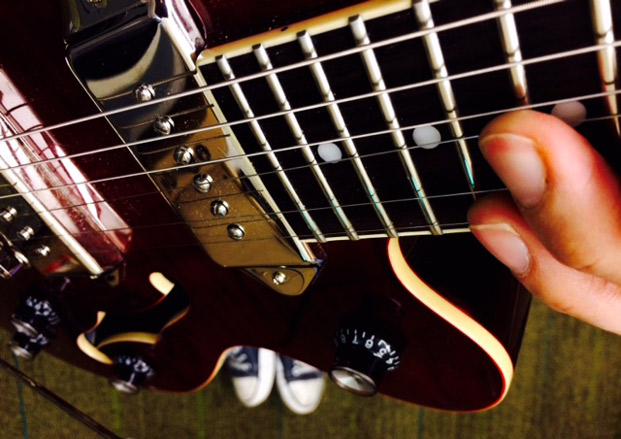Using One-String Scales to Break Out of Box Patterns

One of the most beneficial ways to learn scales on the guitar is to break them down and work them out using the common “box patterns” for each scale.
This system is a solid way to organize the neck and get any scale under your fingers when first exploring these melodic devices on the fretboard. But while they can be very helpful when first learning scales on the guitar, there comes a time when most guitarists yearn to break out of these box patterns and play across the neck with a more open and free approach to scale fingerings.
After getting a very positive response to last week's blog post, “Using Out of the Box Fingerings to Master the Fretboard,” I’ve decided to follow up on that lesson.
Here's a second exercise you can bring to your practice routine in order to break out of box patterns, learn the notes of any key you are in and improve your soloing chops at the same time.
The One-String Scales Exercise
Here's a breakdown of the one-string scales exercise that you can see demonstrated in the video lesson below. Because this way of seeing the neck will be new to many players, try practicing these exercises without a metronome at first, playing with free time to get the notes down before bringing time and tempo into the equation.
• Pick a key and scale you would like to work on, C major for example, then pick a string to focus on for this key.
• Find the lowest possible note in that key on your chosen string. If it was C major on the sixth string, then the lowest possible note in that key would be open E.
• Play the scale up the string until you reach the octave or the highest possible note you can grab. Whichever you chose is fine. Then play back down the scale from there.
• Improvise on that scale, on one string, in one key
• Repeat this exercise on all other strings, 5-4-3-2-1, until you have covered the entire neck in that key, one string at a time.
How to Practice the One-String Scales Exercise
Once you have worked this exercise in one key on all six strings, you can take it to a variety of keys and patterns in order to expand on these one-string scales in your daily workout. Here are some of my favorite ways to expand on this exercise in the practice room:
• Play through all 12 keys of one scale/key across all six strings.
• Apply this exercise to different scale and mode families such as melodic minor, harmonic minor, harmonic major, pentatonic and more.
• Practice different scale patterns such as 3rds, triads and more through each scale, key and individual string.
• Improvise with all of the above exercises as well as play them in a technical manner. As you can see, there is enough variety with the one-string scales exercise to keep you busy in the woodshed for a very long time. But you don’t have to do all of these approaches in a single session. I would recommend picking one idea, one exercise, and focusing on it for 10 to 20 minutes during one practice session. The next day, pick a different version of the exercise to focus on. This will ensure that you benefit from practicing one-string scales but don’t get overwhelmed or bored with the exercise in the process.
One-String Scales Exercises Video Lesson
When it comes time to break out of the common box patterns for any scale you’ve learned on the guitar, playing scales on one string is a fun and engaging way to open up your neck, learn the notes of any key you're in and take your soloing skills to the next level at the same time. This provides for a well-rounded exercise in your daily jazz guitar practice routine. What do you think about practicing scales and soloing on one string? Share your thoughts in the comments section below.
Matt Warnock is the owner of mattwarnockguitar.com, a free website that provides hundreds of lessons and resources designed to help guitarists of all experience levels meet their practice and performance goals. Matt lives in the UK, where he is a senior lecturer at the Leeds College of Music and an examiner for the London College of Music (Registry of Guitar Tutors).
Get The Pick Newsletter
All the latest guitar news, interviews, lessons, reviews, deals and more, direct to your inbox!
Matt Warnock is the owner of mattwarnockguitar.com, a free website that provides hundreds of lessons and resources designed to help guitarists of all experience levels meet their practice and performance goals. Matt lives in the UK, where he teaches Skype guitar students all over the world, and is an examiner for the London College of Music (Registry of Guitar Tutors).
“There are so many sounds to be discovered when you get away from using a pick”: Jared James Nichols shows you how to add “snap, crackle and pop” to your playing with banjo rolls and string snaps
Don't let chord inversions bamboozle you. It's simply the case of shuffling the notes around







![Joe Bonamassa [left] wears a deep blue suit and polka-dotted shirt and plays his green refin Strat; the late Irish blues legend Rory Gallagher [right] screams and inflicts some punishment on his heavily worn number one Stratocaster.](https://cdn.mos.cms.futurecdn.net/cw28h7UBcTVfTLs7p7eiLe.jpg)


